Tim Van Laere Gallery Rome is hosting Couples, the first Roman solo show of Armenian-born artist Armen Eloyan (Yerevan, 1966), from May 10 to July 5, 2025. This is Eloyan’s fifth exhibition with the gallery since joining in 2012, but it is the first time his work has been presented in the new exhibition space at the Capitoline venue. On display are a new series of paintings, wood sculptures and ceramics that deepen the artist’s investigation of human nature and relational representation, moving between pop cultural references and symbolic reworkings.
Eloyan is known for an expressive and direct style of painting and sculpture in which elements of abstraction, autobiography and contemporary visual culture converge. References to comic books and cartoons are a constant in his research, particularly the influence of cartoonist George Herriman and his graphic universe, from which Eloyan has drawn inspiration to create twisted and deformed figures. The subjects of his works, often recognizable but transformed into grotesque characters, serve as tools for a social critique that traverses themes of alienation, consumption and everyday absurdity. The new series presented in Rome marks an evolution in the artist’s poetics, which in Couples confronts the concept of the couple as a psychological and cultural configuration. The focus is on well-known characters from the collective imagination, such as Popeye and Olivia, reinterpreted not as mere pop culture icons, but as archetypes of emotional tensions, power and dependence. The duo, rooted in the cartoon tradition, is transformed into an allegory of interpersonal dynamics. Olivia is often depicted as a fragile and elongated figure, while Popeye appears energetic and compulsive: both become symbols of a relationship that oscillates between protection and conflict. The shift from generically grotesque figures to identifiable subjects reflects a growing interest on the artist’s part in relational psychology. Eloyan analyzes how bonds are built and maintained over time, highlighting the contradictions and ambiguities that characterize human interaction.
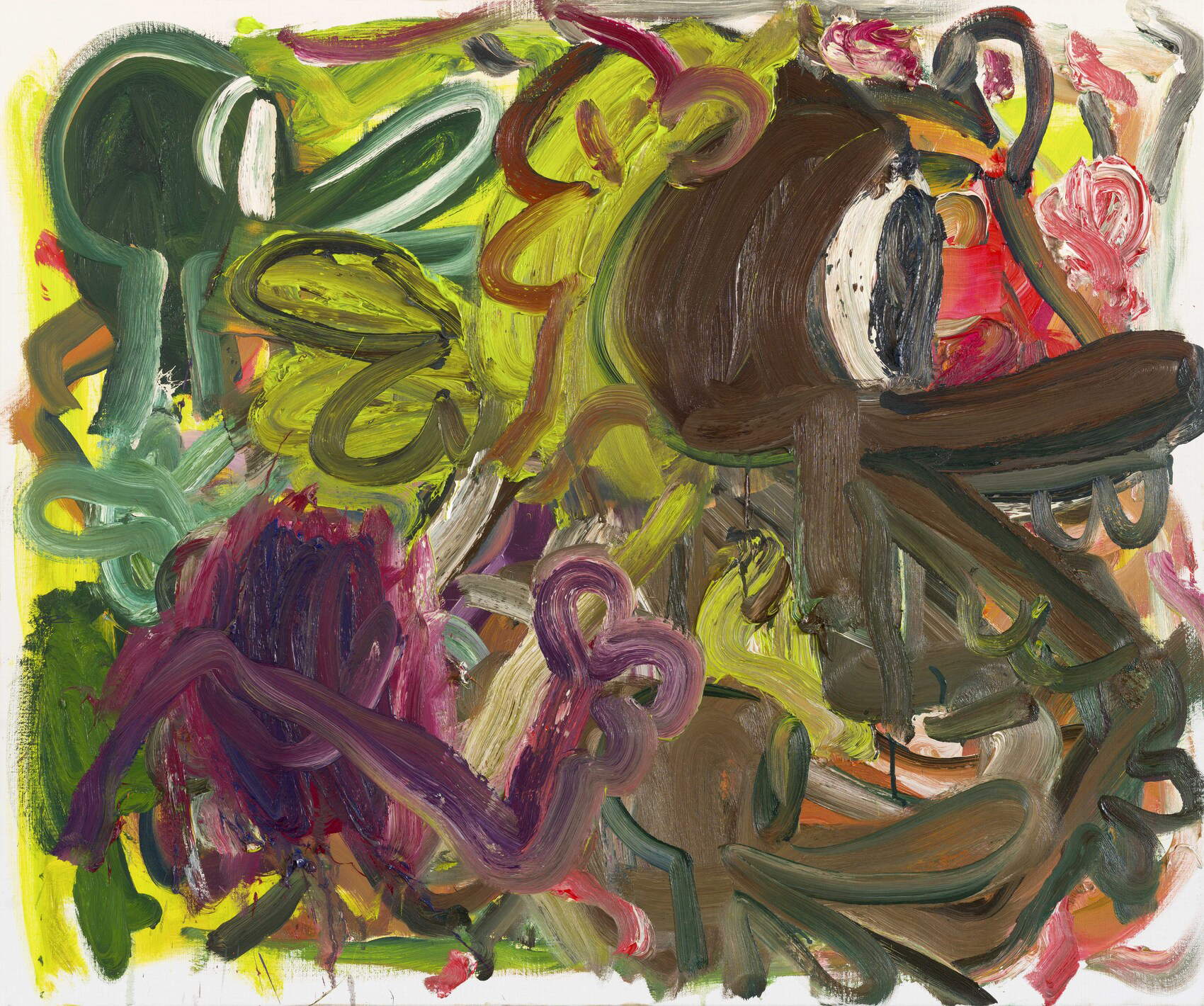
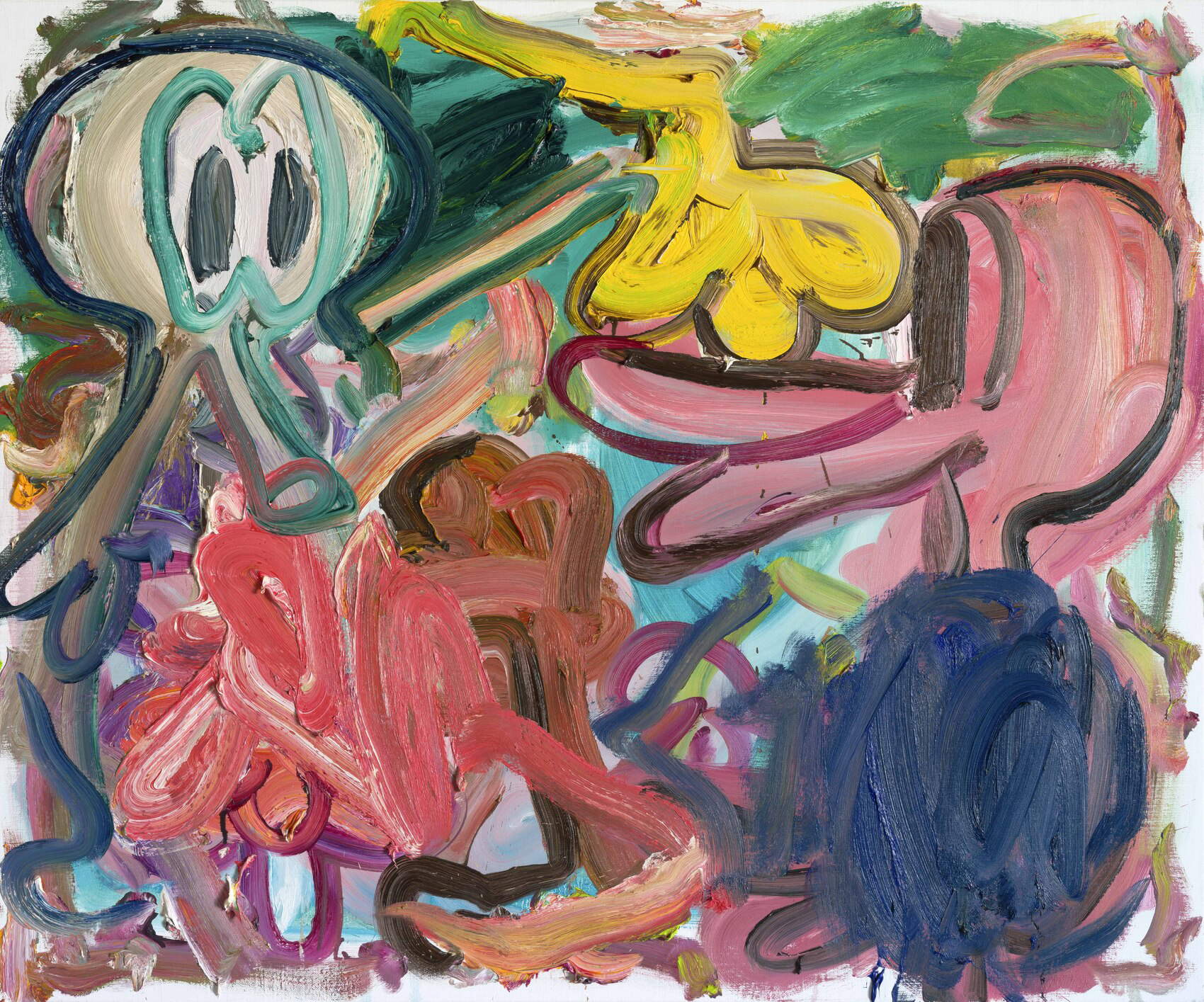
Alongside the paintings, Couples includes a series of wooden sculptures depicting cats, made from rough pieces of wood and later painted. The animal, often associated with traits of independence or eccentricity, becomes in this context another vehicle for investigating human behavior and its unpredictability. Despite the apparent simplicity of the materials and the instinctive aspect of the workmanship, the works maintain a formal coherence that emphasizes the control and intentionality behind the fragmentation.
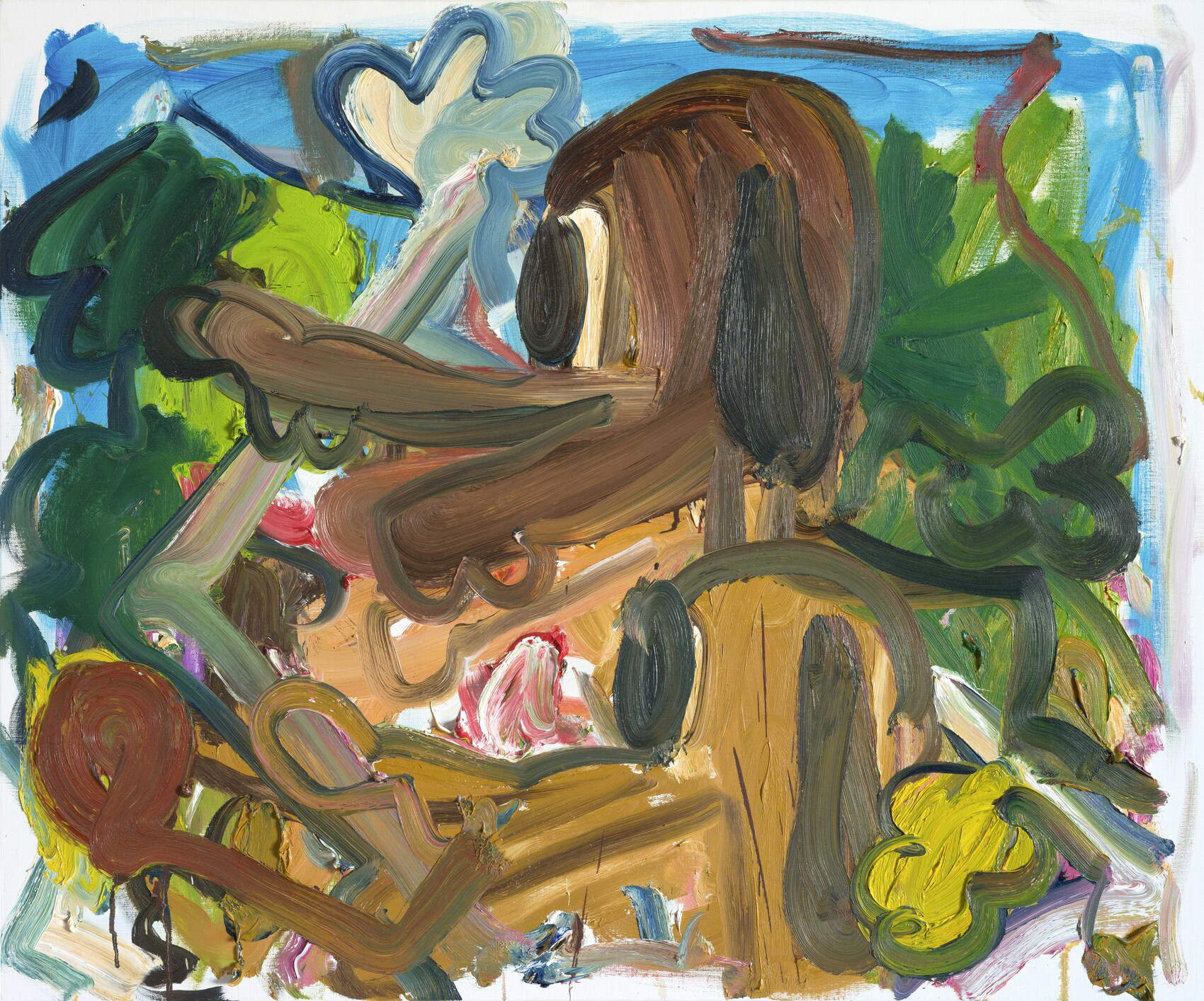
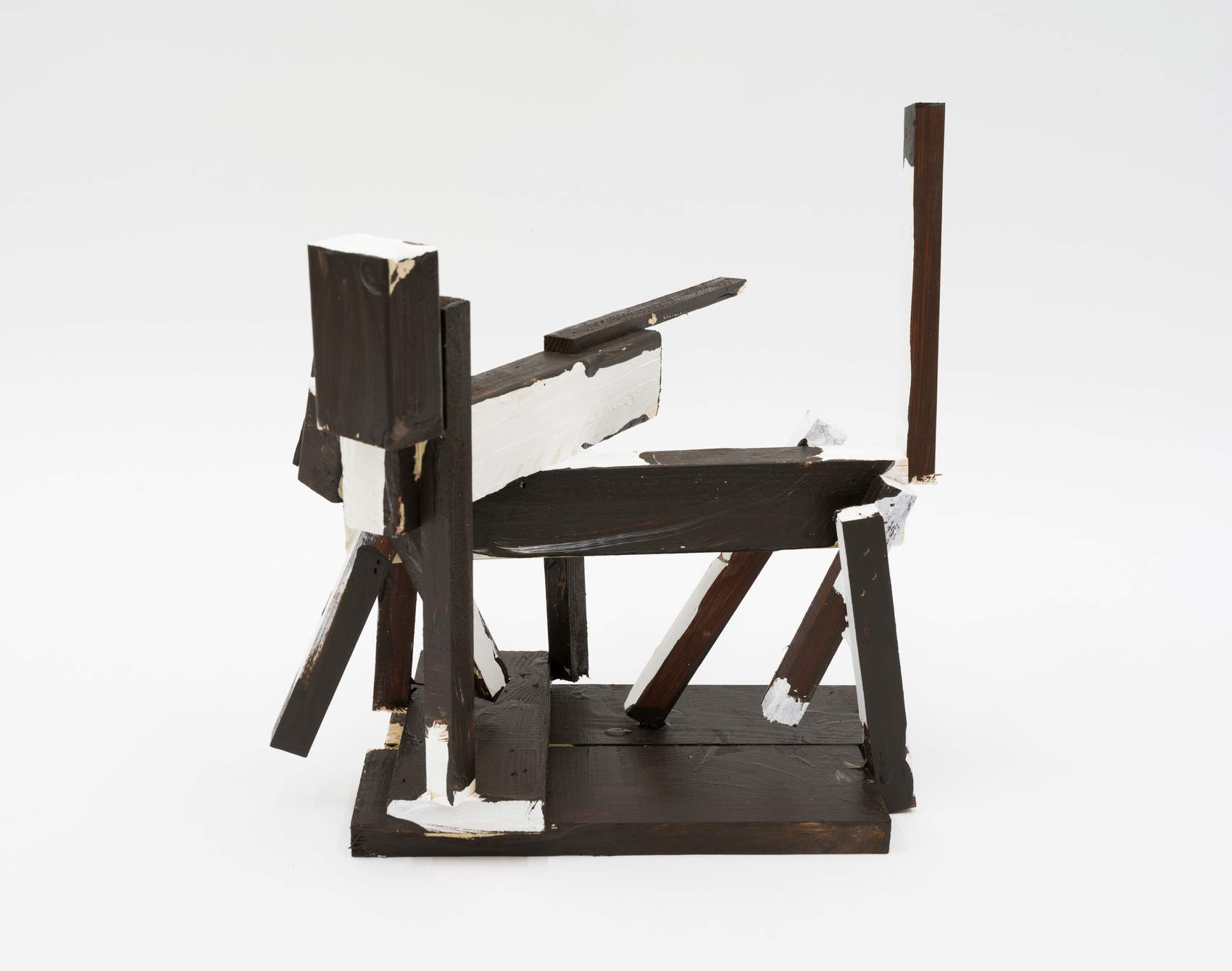
A further core of the exhibition consists of a wooden table on which ceramics with broken shapes are arranged and then reassembled. Among the recognizable objects appear cups, hands, wall fragments and the head of Pluto. In these works, the three-dimensional collage technique recalls the Japanese principle of kintsugi, the art of repair with gold, which Eloyan reworks, however, avoiding any recourse to the precious material. Breakage thus becomes a central element of the artistic process: the gesture of repair is visible, but not softened. Instead of disguising the fractures, the artist makes them structural to the reading of the work, emphasizing fragility as an intrinsic component of form. In Eloyan’s work, references to twentieth-century art, from Philip Guston to Willem de Kooning to Paul McCarthy, combine with a contemporary visual narrative in which symbols appear unstable and multiple identities. His works subvert expectations: what may seem familiar at first glance turns out to be ambiguous or disturbing. The layering of narrative and iconographic planes produces an effect of controlled disorientation, in which irony, vulnerability and violence coexist. The loss of coherence of symbols is not a lack, but a structural fact of his research. In this context, images do not explain but evoke, leaving room for open interpretations. Eloyan’s approach is based on a conscious tension between legibility and opacity. The choice to use common materials and popular forms results in an aesthetic of contradiction, where the everyday takes on symbolic value and the mundane is charged with meaning.
Armen Eloyan has exhibited internationally in numerous institutions. His solo exhibitions include Frac des Pays de la Loire in Carquefou, Kunstparterre in Munich, Passerelle Centre d’art contemporain in Brest, Kunst Halle Sankt Gallen, Centre Culturel Suisse in Paris, and Parasol Unit Foundation for Contemporary Art in London. His works are part of important public collections, including Frac des Pays de la Loire, M HKA in Antwerp, AMC Collection in Amsterdam, The Zhiguan Museum in Beijing, Kunstmuseum in The Hague, Deutsche Bank Collection in London, The Aurora Museum in Shanghai, Centro per l’Arte Contemporanea Luigi Pecci in Prato, University of Maine, Kunstparterre in Munich, Olbricht Collection in Berlin, and By Art Matters in Hangzhou.
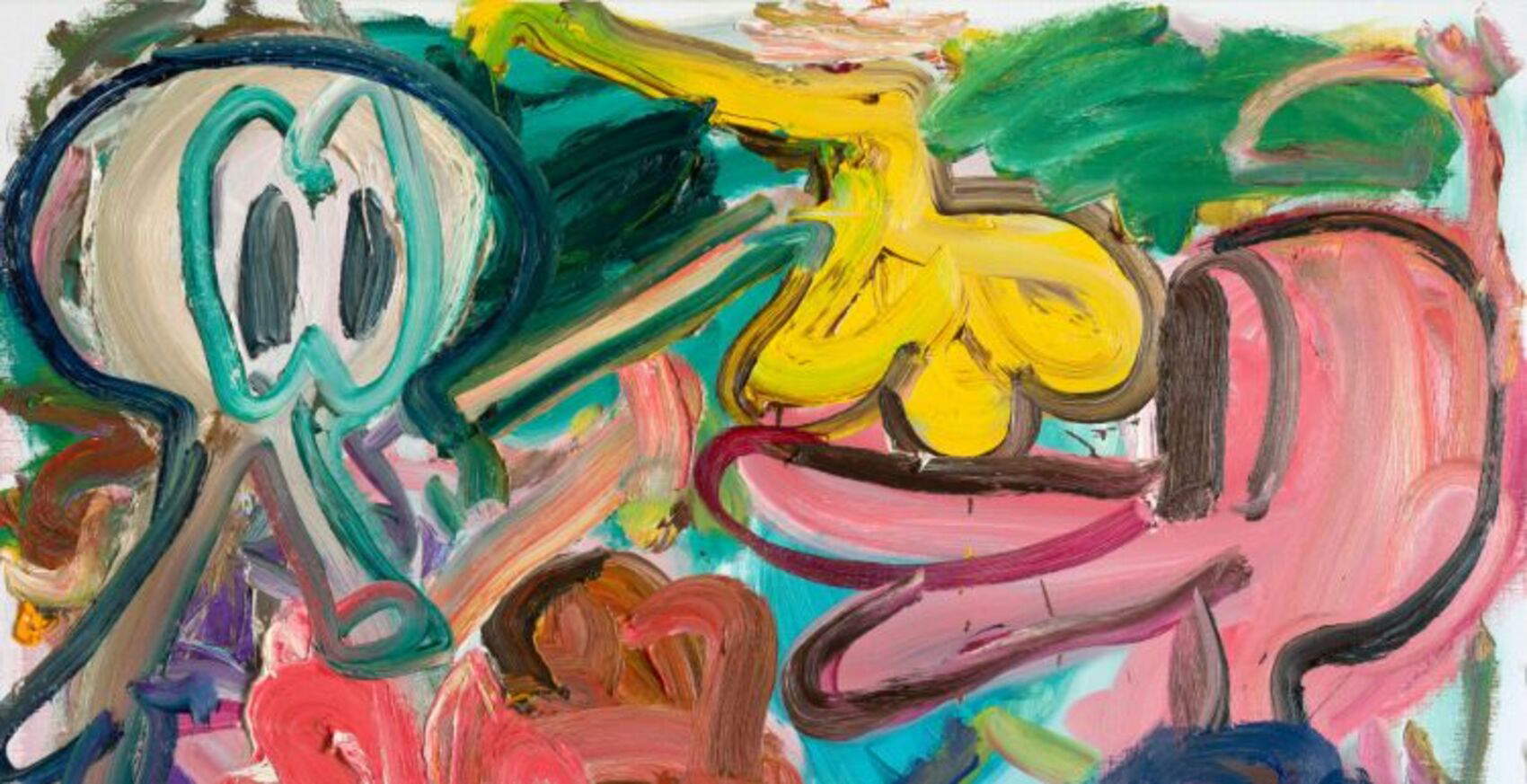 |
| Rome, Tim Van Laere Gallery hosts Armen Eloyan's first Roman exhibition of painting, sculpture and ceramics |
Warning: the translation into English of the original Italian article was created using automatic tools. We undertake to review all articles, but we do not guarantee the total absence of inaccuracies in the translation due to the program. You can find the original by clicking on the ITA button. If you find any mistake,please contact us.